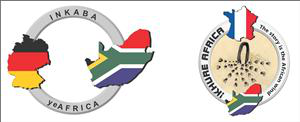Speakers
Ms
Christinah Manthofeela MAKOAE
(Institute for Groundwater Studies (IGS-UFS))
Ms
Grace Lebohang MOLABA
(Institute for Groundwater Studies (IGS-UFS))
Description
The purpose of this study is to investigate the possible use of groundwater to augment the water supply to the Mangaung Municipality in the Free State Province of South Africa. The municipality is at present experiencing water shortages; as a result the State is currently spending large amounts of money to buy water from Lesotho.
Bloemfontein (the Dutch word meaning 'Fountain of Flowers') is the capital city of the Free State Province and the major urban area within the Mangaung Municipality. The city is named after a strong spring discovered in 1828 by Johannes Nicolas Brits. In 1950, a certain Mr. Norman investigated the geological setting of the spring and proposed the theory that the spring was associated with an intrusive ring dyke, which he referred to as a barrier reef.
Bloemfontein is underlain by rocks of the Beaufort Group of the Karoo Supergroup. The rocks of the Beaufort Group predominantly consist of sandstones, mudstones and siltstone. During the Jurassic period, these sedimentary rocks were extensively intruded by dolerite magmas in the form of sills and dykes. From a geohydrological perspective, the intrusions are often associated with the presence of groundwater due to the fact that host sedimentary rocks were significantly altered by the high temperatures and pressures that prevailed during the intrusion of the magmas. The altered sedimentary rocks along the contact zones with the intrusive structures are typically heavily fractured and prone to undergo weathering. These zones often act as preferential pathways for groundwater migration due to their increased hydraulic conductivities caused by the fracturing.
The current study focuses on investigating the potential of the ring dyke as a structure along whose boundaries high-yielding boreholes may be drilled. As part of the study a hydrocensus was conducted to identify existing high-yielding boreholes possibly located in the vicinity of the ring dyke. Geophysical surveys were conducted across the expected location of the ring dyke in various areas within the city limits where the surface infrastructure allowed such surveys. The purpose of the geophysical surveys was to gain insight into the structure of the dyke and its relation to potential groundwater resources. The magnetic and two-dimensional electrical resistivity tomography techniques were used during the survey.
As part of the current study, boreholes will be drilled at suitable locations as determined from the geophysical surveys. Aquifer tests will be conducted on the newly installed boreholes to determine the hydraulic parameters of the intersected aquifer(s) and to estimate the sustainable yields of the boreholes. Groundwater samples from the boreholes will be submitted for chemical analyses to determine the quality of water and its suitability for municipal supply.
Primary authors
Ms
Christinah Manthofeela MAKOAE
(Institute for Groundwater Studies (IGS-UFS))
Ms
Grace Lebohang MOLABA
(Institute for Groundwater Studies (IGS-UFS))
Co-author
Dr
Francois Fourie
(Institute for Groundwater Studies (IGS-UFS))

